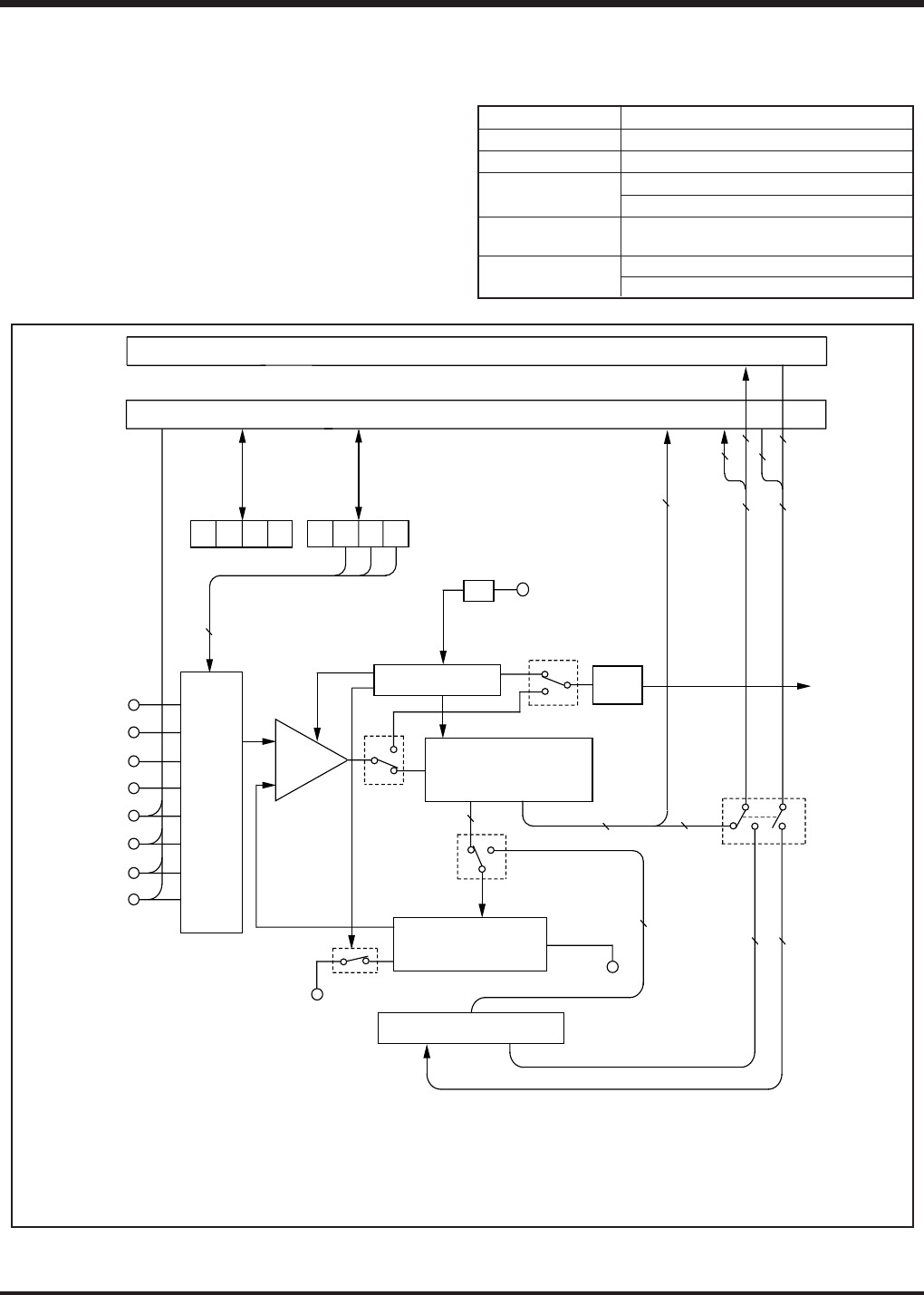
4513/4514 Group User’s Manual
HARDWARE
1-41
FUNCTION BLOCK OPERATIONS
A-D CONVERTER
The 4513/4514 Group has a built-in A-D conversion circuit that
performs conversion by 10-bit successive comparison method.
Table 14 shows the characteristics of this A-D converter. This A-
D converter can also be used as an 8-bit comparator to compare
analog voltages input from the analog input pin with preset val-
ues.
Table 14 A-D converter characteristics
Characteristics
Successive comparison method
10 bits
Linearity error: ±2LSB
Non-linearity error: ±0.9LSB
46.5
µ
s (High-speed mode at 4.0 MHz
oscillation frequency)
4 for 4513 Group
8 for 4514 Group
Parameter
Conversion format
Resolution
Relative accuracy
Conversion speed
Analog input pin
Fig. 26 A-D conversion circuit structure
Register A (4)
V
SS
V
DD
IAP4
(P4
0
—
P4
3
)
TABAD
1/6
Q2
3
Register B (4)
Q1
1
Q1
0
Q1
2
TADAB
Q2
2
Q2
1
Q2
0
0
1
4
4
4
4
8 8
8
01
1
8
10
Q2
3
Q2
3
DAC
operation
signal
0
1
Q2
3
8
8
2
TALA
Q2
3
Q1
3
TAQ1
TQ1A
TAQ2
TQ2A
ADF
(1)
A
IN0
/CMP0-
A
IN1
/CMP0+
A
IN2
/CMP1-
A
IN3
/CMP1+
P4
0
/A
IN4
P4
1
/A
IN5
P4
2
/A
IN6
P4
3
/A
IN7
3
10
10
Comparator
8-channel multi-plexed analog switch
Instruction clock
A-D control circuit
Successive comparison
register (AD) (10)
A-D interrupt
DA converter
(Note 1)
Comparator register (8)
(Note 2)
Notes 1: This switch is turned ON only when A-D converter is operating and generates the comparison voltage.
2: Writing/reading data to the comparator register is possible only in the comparator mode (Q2
3
=1).
The value of the comparator register is retained even when the mode is switched to the A-D conversion
mode (Q2
3
=0) because it is separated from the successive comparison register (AD). Also, the resolution in
the comparator mode is 8 bits because the comparator register consists of 8 bits.
3: The 4513 Group does not have ports P4
0
/A
IN4
–P4
3
/A
IN7
and the IAP4 and OP4A instructions.
(Note 3)
OP4A
(P4
0
—
P4
3
)
